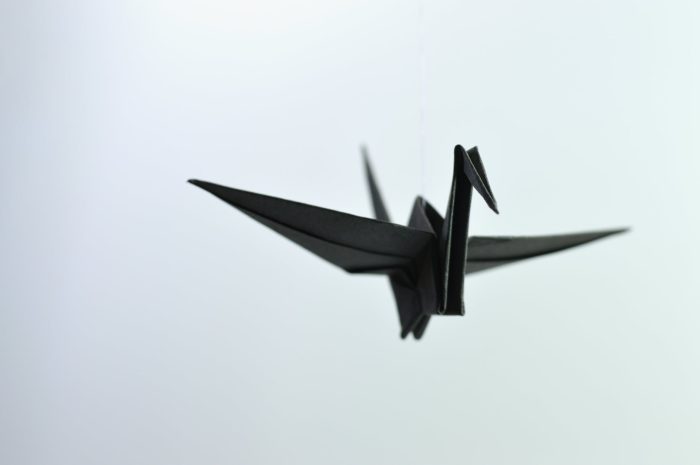Robert Lang has worked as a physicist, engineer, and R&D manager. He has authored or co-authored over 80 technical publications and has 50 patents awarded/pending on semiconductor lasers, optics and integrated optoelectronics. He wrote his PhD thesis on semiconductor lasers, with a focus on laser geometries and spectral properties. He also worked as a physicist, researching lasers for NASA. In 2001 however, Robert Lang left all of that behind to pursue his lifelong passion of origami.
In the origami universe, Lang is highly renowned. He currently has a catalog of over 500 designs, but it’s not just his stunningly beautiful and highly detailed work that makes him famous. He is actually making a difference in the world. Some of his techniques have been applied towards fixing real-world engineering problems and complex medical procedures.
In addition to his own love for origami, he also enjoys helping others and has written books and created software to teach people how to implement designs. One of his programs, TreeMaker is able to construct a crease pattern from any simplistic “tree” (stick figure) drawing. His other program, ReferenceFinder, can take an existing pattern and provide a step-by-step computer-generated folding sequence. This folding program incorporates the seven truths about origami folding, known as the Huzita-Justin axioms. These are a set of mathematical rules related to the principles of paper folding.
While Lang was an artist-in-residence at MIT, he gave a lecture about origami and its relationship to mathematical notions. He also gave a highly-praised TED Talk entitled “The Math And Magic Of Origami”. During this lecture, he demonstrated how mathematics and the invention of an origami “language” have led to the industry-changing forms of origami that are starting to appear. We are no longer creating simple origami cranes. Based on its innate ability to fold and unfold at any time, the concept of origami has transformed how we design, manufacture, assemble and package many of today’s products. Origami is inspiring engineers to look beyond traditional designs to make “smart structures”. These new products are able to bend and stretch while providing incredible functionality. During his TED talk, he showed how engineers are basically using 7th-century Japanese art to solve some of the world’s most challenging problems. His foldable glass telescope was one of the highlights.
Thanks to pioneers like Robert Lang, companies have been able to take this design concept even further, creating new and improved versions of automobile airbags and bulletproof police shields. The technology has also impacted space travel , lace-free shoes, foldable kayaks and temporary “cardborigami” shelters to help homeless people. Scientists studying undersea life now have an underwater bot to safely capture sea creatures for research. Even home décor has been revolutionized by origami lighting. In the health industry, GE Healthcare joined with Brigham Young University to design an origami cover for the arm extension of an operating room X-ray machine, and we now have surgical items that can enter narrow openings in the human body and unfold after insertion, such as probes, forceps, and stents.












Read 0 comments and reply